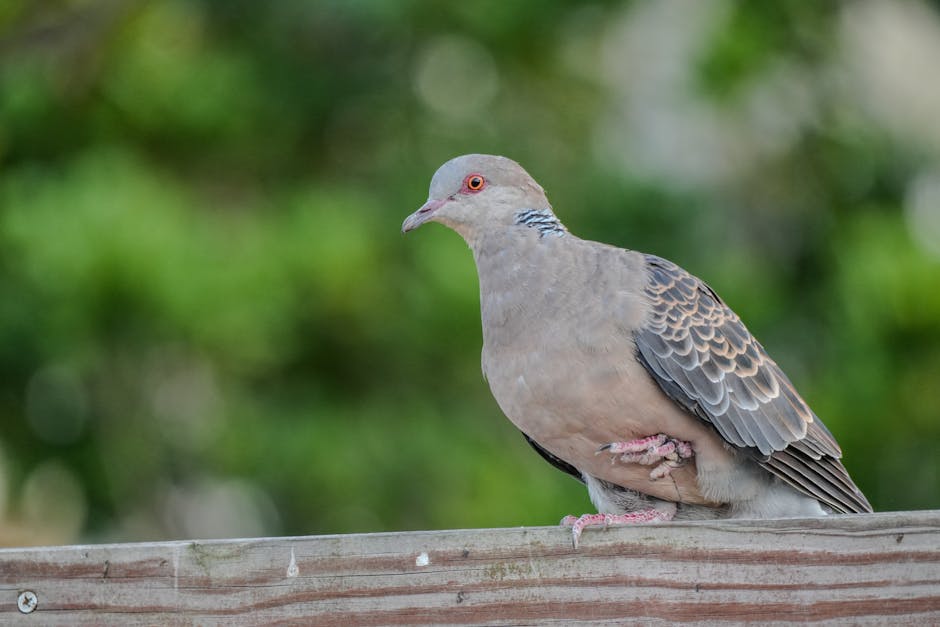Introduction: Bird Leg Bands: Insights into Avian Research and Conservation

Bird leg bands, also known as bird rings, are invaluable tools in the world of avian research and conservation. These small metal or plastic bands provide vital information about bird behavior, population dynamics, migration patterns, and survival rates. In this article, we will delve into the purpose and significance of bird leg bands, explore the different types available, discuss where to purchase them, and provide best practices for their application.
Purpose and Importance of Bird Leg Bands
Bird leg bands play a pivotal role in scientific endeavors, allowing researchers, conservationists, and bird enthusiasts to gain valuable insights into avian species. By assigning unique codes or numbers to these bands, individual birds can be identified and tracked throughout their lives. This identification system enables researchers to monitor breeding patterns, habitat use, population trends, and implement effective conservation strategies.
The information gathered through bird leg bands is instrumental in understanding the intricate dynamics of bird populations. Researchers can analyze the movements of banded birds, shedding light on migration routes, foraging habits, and the influence of environmental factors on their behavior. Furthermore, leg bands facilitate the study of individual bird lifespans, survival rates, and reproductive success, providing crucial data for assessing the overall health and sustainability of bird populations.
Types of Bird Leg Bands
A variety of bird leg bands are available to suit different research needs. Common materials include aluminum, stainless steel, and plastic. Aluminum bands are favored for their durability and ease of customization, allowing for the inclusion of specific information on each band. Plastic bands offer lightweight options that are easily visible in the field, making them ideal for observational studies. Color-coded bands are often employed in specific research projects or with captive birds, providing visual indicators for age, gender, or breeding status.
Leg Band Sizes and Application
Bird leg bands come in various sizes to accommodate different bird species’ leg diameters. It is crucial to select an appropriately sized band to ensure a comfortable fit that does not hinder the bird’s mobility. Proper sizing and application of leg bands are essential to minimize any potential adverse effects on the bird’s well-being.
In the following sections, we will explore where to purchase bird leg bands, considering both online sources and local suppliers. We will also discuss factors to consider when assessing shipping and costs. Furthermore, we will provide best practices for purchasing and applying bird leg bands, addressing frequently asked questions along the way. Let’s embark on this journey to unravel the world of bird leg bands and their significance in avian research and conservation.
Bird Leg Bands: An Essential Tool in Avian Research and Conservation

Bird leg bands, also known as bird rings, are small, lightweight rings or bands made of plastic, aluminum, or stainless steel. Placed around a bird’s leg, typically near the ankle, these bands serve multiple purposes in the field of ornithology.
The primary purpose of bird leg bands is to provide a unique identifier for individual birds. Marked with a specific code or number, these bands enable researchers, bird enthusiasts, and conservationists to track and monitor birds’ movements, behavior, and population dynamics. By observing banded birds over time, valuable data can be collected on migration patterns, nesting habits, longevity, and population sizes.
Bird leg bands play a crucial role in scientific research, bird banding programs, and conservation efforts. They allow researchers to safely capture and handle birds, collect essential information about their life history, and contribute to our understanding of avian ecology. For example, by banding a bird, researchers can determine its age, sex, and breeding success, aiding in the study of bird populations, monitoring their health, and understanding the ecological factors that impact their survival.
In addition to scientific purposes, bird leg bands are also used by bird breeders, aviculturists, and pet bird owners. Breeders rely on leg bands to track individual birds within their breeding programs, ensuring accurate lineage records and genetic diversity. Aviculturists and pet bird owners may use leg bands as a means of identification or to distinguish between birds in a shared aviary or household.
Bird leg bands are versatile tools that provide valuable information for scientific research, conservation efforts, and avicultural practices. They enable the monitoring of individual birds, tracking of migration patterns, assessment of population health, and implementation of effective conservation strategies. By understanding the importance of bird leg bands and their various applications, we can work towards a better understanding and preservation of our avian friends.
Different Types of Bird Leg Bands

Bird leg bands are essential for identifying and tracking individual birds for research, conservation, and breeding programs. There are various types of bird leg bands commonly used:
Aluminum Bands
Aluminum bands are lightweight, durable, and easy to apply. They are ideal for small to medium-sized birds and can be customized with unique numbers or codes for individual identification.
Plastic Bands
Plastic leg bands offer a lightweight alternative to aluminum bands and come in a range of colors. They are commonly used for larger bird species like waterfowl or raptors. Plastic bands can also be customized with numbers or codes for precise identification.
Split Plastic Bands
Split plastic bands consist of two interlocking pieces of plastic that can be resized as birds grow. They are particularly useful for species that undergo significant size changes during development.
Closed Bands
Closed bands are pre-formed rings made of materials like aluminum or stainless steel. They are placed on birds’ legs when they are young and cannot be removed without harming the bird. Closed bands provide permanent identification and are commonly used in breeding programs and long-term research studies.
Open Bands

Open bands are pre-formed rings with a small gap that allows them to be placed on adult birds. These bands can be removed and replaced if necessary, making them suitable for temporary identification purposes or studies that require periodic band checks.
Radio Transmitters
In addition to leg bands, researchers sometimes use radio transmitters to track bird movements. These transmitters are attached to a bird’s leg and emit signals that can be detected by receivers, enabling researchers to monitor the bird’s location and behavior.
Understanding the different types of bird leg bands is crucial when selecting the appropriate band for your specific research or conservation needs.
Where to Buy Bird Leg Bands

Online Sources
Online sources provide a convenient and extensive range of options for purchasing bird leg bands. Consider the following platforms:
-
Online Marketplaces: Websites like Amazon, eBay, and Etsy offer a wide variety of bird leg bands from sellers worldwide. Explore different brands, sizes, and types of bands suitable for various bird species and specific purposes such as identification, tracking, or breeding programs.
-
Specialized Bird Supply Websites: Dedicated bird supply websites and online pet stores focus specifically on avian-related products. They offer a comprehensive selection of leg bands with detailed information about materials, sizes, and customization options.
-
Manufacturers and Distributors: Many bird leg band manufacturers and distributors have their own websites where you can purchase bands directly. These websites often provide customization options for personalized identification.
Local Suppliers
For those who prefer a hands-on approach, consider the following local suppliers:
-
Pet Stores: Pet stores specializing in birds or general pet supplies often carry bird leg bands. Visit a physical store to inspect the bands closely and seek assistance from knowledgeable staff.
-
Avian or Bird Clubs and Societies: Local avian clubs and societies can be valuable resources for finding suppliers of bird leg bands. Reach out to these organizations to gather recommendations and potentially connect with local suppliers.
-
Veterinary Clinics: Veterinary clinics that specialize in bird care or offer avian services may serve as sources for bird leg bands, especially for specific veterinary needs.
When choosing a source to purchase bird leg bands, consider factors such as band quality, sizing options, customization features, and shipping costs. By exploring both online sources and local suppliers, you can find the best fit for your needs and ensure the well-being and proper identification of your feathered companions.
(Note: The above information is based on research conducted up until September 2021. Prices, availability, and specific suppliers may have changed since then. It is recommended to verify current information when making purchasing decisions.)
Considering Shipping and Costs

When purchasing bird leg bands, it’s important to consider various factors related to shipping and costs. This section will guide you through key aspects to keep in mind for a smooth and cost-effective purchasing process.
Online Retailers
Research and compare different online retailers specializing in bird leg bands to find the most reliable and cost-effective sellers. Consider shipping costs, delivery timeframes, and return policies to make an informed decision and secure the best deal for your needs.
Shipping Costs
Compare shipping costs among different sellers to ensure you’re getting the most favorable deal. Retailers may offer free shipping for certain order sizes or charge a flat rate or calculate shipping based on factors like weight or distance.
Delivery Timeframes

Consider the estimated delivery timeframes provided by the retailers. Opt for sellers that offer expedited shipping or have shorter delivery times if you require the bird leg bands within a specific timeframe.
International Shipping
When purchasing from an international retailer, be aware of potential customs duties, taxes, and import regulations. Thoroughly research and familiarize yourself with the customs procedures of your country to avoid unexpected expenses or delays.
Return Policies

Check the return policies of the retailers you’re considering. Understanding the return procedures and associated costs is important in case you receive damaged or incorrect leg bands or if you change your mind about the purchase.
By carefully considering shipping and costs when purchasing bird leg bands, you can make an informed decision, optimize your expenses, and ensure a satisfactory buying experience.
Best Practices for Purchasing and Applying Bird Leg Bands

When purchasing and applying bird leg bands, follow these best practices to ensure appropriateness, safety, and comfort:
Types of Bird Leg Bands
- Aluminum bands: Lightweight and durable, commonly used for small to medium-sized birds.
- Plastic bands: Made from durable plastic materials, suitable for larger birds.
- Split bands: Fitted onto a bird’s leg without capturing or restraining the bird, useful for tracking wild birds.
Considerations for Purchasing Bird Leg Bands
- Size and compatibility: Choose bands appropriate for the bird species and ensure a comfortable fit.
- Material quality: Opt for high-quality, durable bands that do not cause discomfort or pose health risks.
- Legibility: Look for leg bands with clear and visible markings for easy identification and tracking.
- Research permits: Obtain necessary permits and comply with legal requirements for research purposes.
Applying Bird Leg Bands
Follow these best practices when applying leg bands:
- Proper technique: Familiarize yourself with the correct application technique for the specific type of leg band.
- Capture and restraint: Temporary capture and restraint may be necessary depending on the type of leg band.
- Sterilization: Clean and sterilize the leg band before application to prevent disease transmission.
- Monitoring and follow-up: Monitor the bird closely after applying the leg band, regularly checking for wear or tightness and making necessary adjustments.
By adhering to these best practices, you can ensure the proper purchase and application of bird leg bands, promoting effective bird tracking and research while prioritizing the well-being of the birds.
Continue to the next section: Frequently Asked Questions
Frequently Asked Questions
What are bird leg bands?
Bird leg bands are small, circular or strip-shaped metal or plastic rings used to identify and track individual birds. They provide a unique identifier for researchers, breeders, and bird enthusiasts to monitor specific birds within a population.
Why are bird leg bands used?
Bird leg bands serve multiple purposes. They are essential in scientific research to study bird behavior, migration patterns, population dynamics, and ecological factors. Leg bands also play a crucial role in bird breeding programs, allowing breeders to monitor individual birds for genetic management, lineage tracking, and breeding success rates. Additionally, bird owners and enthusiasts use leg bands to identify their pet birds.
Where can I buy bird leg bands?
Bird leg bands are available from various sources:
-
Avian research organizations: Research institutions, universities, and ornithological societies offer leg bands for scientific purposes. They may have specific requirements and guidelines for purchasing leg bands, particularly for research projects.
-
Specialty bird supply stores: Dedicated bird supply stores cater to bird owners, breeders, and enthusiasts. They stock a range of bird-related products, including leg bands in different sizes and materials.
-
Online retailers: Numerous online retailers specialize in bird supplies and provide a wide selection of leg bands. These platforms offer convenience and the ability to compare options and prices from home.
Consider factors such as material, size, and compatibility with the bird species when purchasing leg bands. Also, be aware of any regulations or guidelines specific to your region or purpose.
Follow proper procedures and guidelines for applying leg bands to ensure bird safety and comfort. Seek guidance from experts or consult relevant resources if unsure.
Using bird leg bands responsibly contributes to scientific knowledge, breeding programs, and avian species understanding and conservation.
Conclusion

In conclusion, bird leg bands are invaluable tools for identification and tracking in avian research, conservation, and personal birdkeeping. We explored different types of leg bands, where to buy them, and best practices for application.
Leg bands come in various materials, including aluminum, plastic, and stainless steel, each with unique qualities and durability. Choose the right size and type considering specific bird species requirements.
Readers have several options for purchasing leg bands. Online sources provide convenience and a wide range of choices, while local suppliers offer personal interaction and immediate access. Consider shipping and costs for affordability and timely delivery.
Ensure reliable sources by conducting thorough research, including checking customer reviews and ratings. Verify quality, authenticity, and compliance with legal requirements, especially for banding projects or research.
For specialized banding projects or extensive research, consult avian experts or ornithologists. Their expertise provides valuable insights into selecting appropriate leg bands and ensuring ethical bird handling during the process.
Purchasing bird leg bands contributes to bird conservation, citizen science projects, and responsible pet bird keeping. Bands enable monitoring of populations, migration patterns, and individual behavior, aiding avian species understanding and protection.
In conclusion, bird leg bands are vital for studying and safeguarding our feathered friends. Whether you are a researcher, conservationist, or bird lover, take action and acquire leg bands to contribute to their well-being and conservation.
Remember, every band counts in our efforts to preserve and appreciate the beauty and diversity of avian life.
Frequently Asked Questions
Frequently Asked Questions
1. Where can I buy bird leg bands online?

You can purchase bird leg bands online from platforms such as Amazon, eBay, Etsy, and specialized bird supply websites. These online marketplaces offer a wide range of options in terms of brands, sizes, and types of bands suitable for various bird species and specific purposes.
2. Are there local suppliers for bird leg bands?
Yes, there are local suppliers where you can buy bird leg bands. Pet stores specializing in birds or general pet supplies often carry bird leg bands. Additionally, you can reach out to local avian or bird clubs and societies for recommendations on local suppliers. Veterinary clinics that offer avian services may also serve as sources for bird leg bands.
3. What factors should I consider when buying bird leg bands online?
When purchasing bird leg bands online, consider factors such as band quality, sizing options, customization features, shipping costs, and delivery timeframes. Read customer reviews and ratings to ensure the reliability of the seller and verify compliance with legal requirements, especially for research purposes.
4. Are there any considerations for international shipping of bird leg bands?

If you’re purchasing bird leg bands from an international retailer, be aware of potential customs duties, taxes, and import regulations. Thoroughly research and familiarize yourself with the customs procedures of your country to avoid unexpected expenses or delays.
5. What should I do if I receive damaged or incorrect bird leg bands?
Before making a purchase, check the return policies of the retailers you’re considering. If you receive damaged or incorrect leg bands, or if you change your mind about the purchase, follow the retailer’s return procedures and contact their customer service for assistance.

Leave a Reply